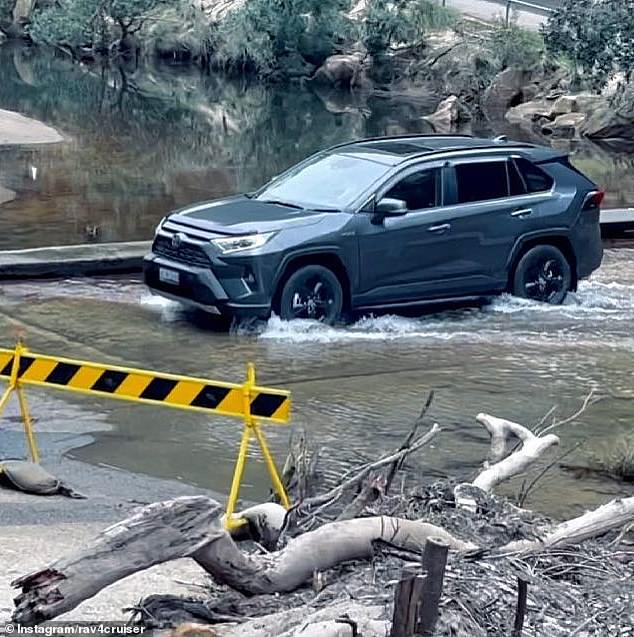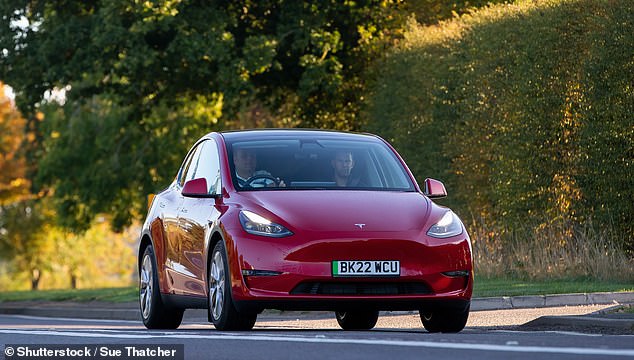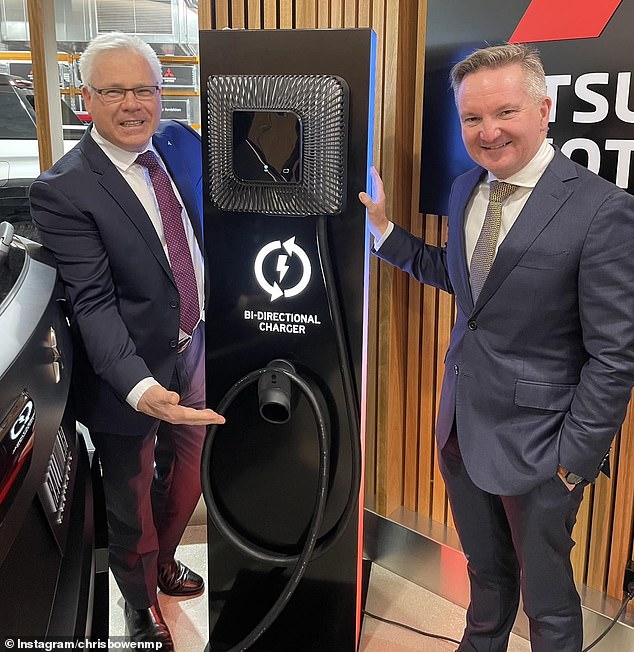Australians are flocking to hybrid cars over fully electric vehicles ahead of Labor’s upcoming emissions crackdown, which could send prices soaring.
One in seven new cars sold in Australia in March were petrol-electric hybrids, outperforming less than one in ten battery electric vehicles.
New data from the Federal Chamber of Automotive Industries on Thursday showed a dramatic change from a year ago, when battery electric vehicles easily surpassed hybrids.
A year ago, battery electric vehicles were comfortably outselling hybrids, with a 6.8 percent market share compared to 6 percent for hybrids and plug-in hybrids.
Hybrids accounted for 14 percent of all new car sales last month, while electric vehicles accounted for just 9.5 percent.
The rise in hybrid sales comes after Energy and Climate Change Minister Chris Bowen unveiled the New Vehicle Efficiency Standard (NVES) in February, which aims to discourage sales of cars with petrol or petrol engines. diesel, including hybrids.
The dramatic rise in hybrid sales helped push the Toyota RAV4 SUV, which is available as a hybrid but not a full electric vehicle in Australia, into second place as the country’s second best-selling car in March.
The sales increase put it ahead of the all-electric, zero-emissions Tesla Model Y, which fell to third place, but behind the diesel Ford Ranger in the No. 1 spot.

Australians are flocking to hybrid cars over fully electric vehicles despite Labor’s upcoming emissions crackdown (pictured, a hybrid-powered Toyota RAV4).
But even the current RAV4 hybrid, which emits 107 grams of carbon per kilometre, would still be above the Labor Party’s proposed NVES emissions limit.
The NVES will impose penalties on car manufacturers if the average emissions of their new fleet exceed 92 grams of CO2 per kilometer between now and 2027.
The government’s plan, which will come into force on January 1, 2025, aims to reduce average carbon emissions from passenger vehicles to 58 grams of carbon per kilometer by 2029.
This would mark a 59 per cent reduction from the target of 141 grams per kilometer by 2025 as part of Labour’s plan to reduce carbon emissions by 43 per cent by 2030.
No gasoline, diesel or hybrid car on sale now would meet that target, and automakers were fined $100 for every gram their new fleet, on average, exceeded a specific threshold.
The Federal Chamber of Automotive Industries estimates this would add $2,720 to the price of a gasoline-powered RAV4, but could make a hybrid version up to $3,840 cheaper.
This would pass costs on to consumers but reward electric vehicle makers who could sell carbon credits to rivals, and the plan is expected to reduce the price of a Tesla Model Y by $15,390.
But a Toyota LandCruiser with a diesel engine would be $13,250 more expensive than a vehicle that emits more than 200 grams of CO2 per kilometer, according to the FCAI.
FCAI chief executive Tony Weber, whose group has lost support from electric vehicle makers Tesla and Volvo’s Chinese subsidiary Polestar, said carmakers would struggle to adapt to Labour’s efficiency standard.


Gasoline-electric hybrid cars had a 14 percent market share in March, compared with 9.5 percent for electric vehicles, new data from the Federal Chamber of Automotive Industries released Thursday showed (in the photo, a fully electric Tesla Model Y).
“A fuel efficiency standard is long overdue. However, we remain concerned about the speed and magnitude of change for both manufacturers and, more importantly, consumers,” he said.
“Automakers will respond, but it will take time to develop new products, especially in the large SUV and light commercial segments, that meet expectations in terms of price, performance and emissions, considering that these vehicles represent more than a third of new vehicle sales in Australia.’
SUVs, or cars with higher ground clearance and four-wheel drive, had a 56.6 percent market share during the first three months of 2024, with 172,234 sold out of 304,452.
Among the top 10, SUVs took six places, including the Toyota RAV4 in second place with 5,070 sales, the Mitsubishi Outlander in fifth place with 2,764 sales, the Australian-designed Ford Everest in seventh position with 2,264 sales, the Nissan X-Trail in eighth. The larger Toyota LandCruiser is ninth with 2,159 sales and the Mazda CX-5 is tenth with 2,134 sales.


The rise in hybrid sales has come despite Climate Change and Energy Minister Chris Bowen unveiling a New Vehicle Efficiency Standard (NVES) in February designed to discourage sales of hybrids. petrol or diesel engine cars, including hybrids (pictured with Mitsubishi Australia boss). executive Shaun Westacott)
